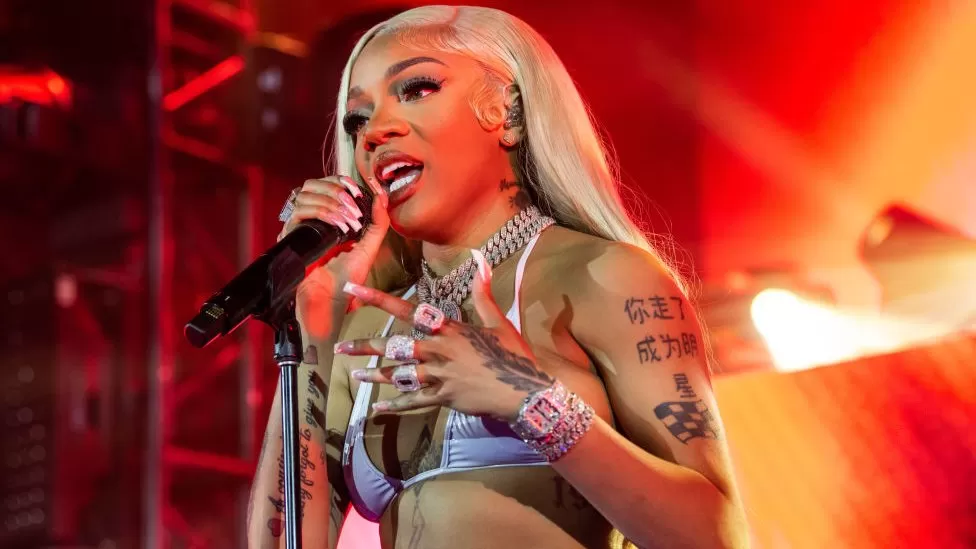
This article is more than
6 year old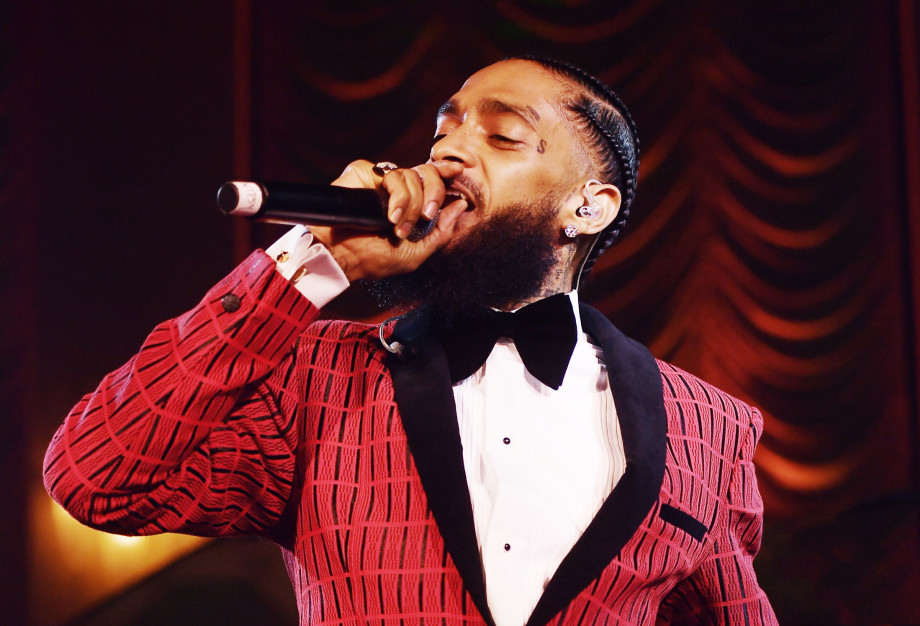
All too often, people invoke the cliché: “They were more than just a rapper.’’ It’s a backhanded compliment that wrongly implies that being a great artist somehow isn’t enough. But in the instance of Nipsey Hussle, the phrase feels unusually appropriate; rap was merely the beginning.
The Crenshaw legend was an ambassador of Los Angeles, an eternal figure who embodied the true spirit of the city, as much a part of its fabric as a cuffed and creased khaki, a Dodgers fitted, a Fatburger (whose uniforms he custom designed), or World on Wheels—the fabled Mid-City roller skating rink that he helped save and rehabilitate. Neighborhood Nip was a brilliant entrepreneur, a bridge builder, a philanthropist, a community activist and a spiritual compass, a fearless truth teller, a devoted husband, a loving father, and a powerful symbol of the possibilities in life—while remaining an acerbic critic of the systematic iniquities that deferred the dreams of so many from the community that he tirelessly represented. He was an all-time West Coast rap great, as beloved as anyone ever to serenade the streets of L.A. He was just 33 years old. He’ll be mourned until Slauson crumbles into sand and sea.
A still-unknown assailant murdered Ermias Asghedom on a Sunday afternoon in front of the Marathon Clothing store that he owned. We may never receive the full answers for why such a senseless tragedy occurred, but from the moment the news broke, there was only one question: How could this happen? If ’90s gangsta rappers waged internecine war between sets draped in Piru Red and Marine Blue, Nipsey was a link between generations. Beloved by all, he was one of the first rappers to cross once-inviolable boundaries between long-time enemies. He proudly represented the Rollin 60’s Crips, but boasted an initial co-sign from the red-rag-waving the Game.
Over the last decade, you’d be hard-pressed to find a major L.A. rapper he didn’t work with: YG and Kendrick Lamar, Snoop Dogg and Dom Kennedy, Problem and G Perico. If you scroll the Instagrams of the latest generation of young West Coast rap stars, you won’t find a single one who hasn’t paid heartfelt tribute to his influence, mentorship, and legacy. Outside of the West, he worked with everyone from Drake and Young Thug to Jadakiss, Slim Thug, and Puff Daddy—the latter on a song where he bragged about owning his masters while Sean Combs sanctified the proceedings with a get-money hymn.
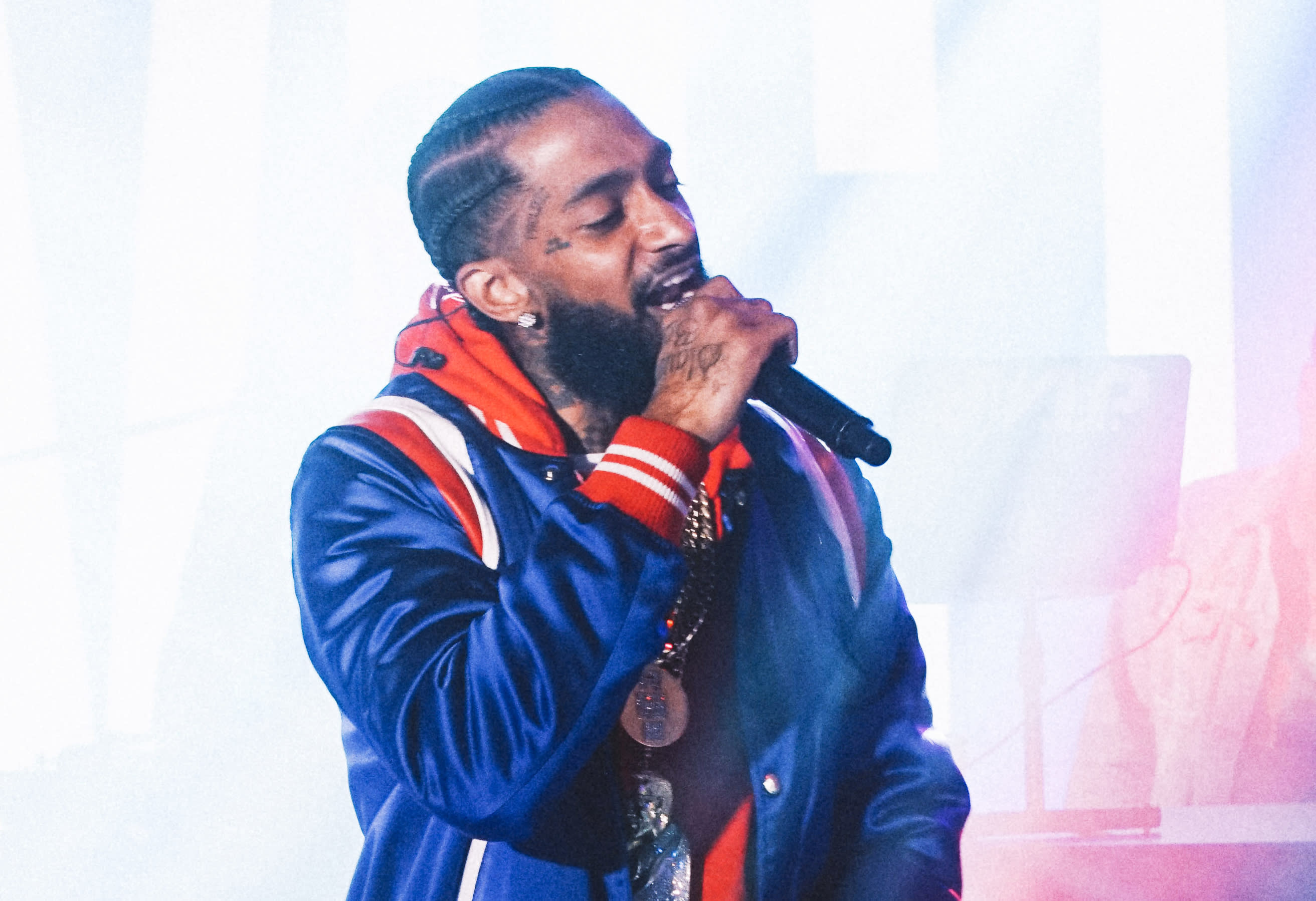
|
Nipsey was a serious hip-hop scholar who defied purism. He could wax poetic about the “Batterram” and Yukmouth of the Luniz. He was a regional legend who emerged during a time when that distinction seemed temporarily obsolete. Perhaps that’s why it took him until the last few years to receive the national respect that he’d long deserved. He was a figure whose local importance can’t be overstated—something similar to Boosie in Baton Rouge, E-40 in the Bay, or Z-Ro in Houston. As he famously said in a withering critique of this publication: “You can’t just walk on Crenshaw and Slauson and say, ‘I don’t like Nipsey’s project,’ ’cause n***as gonna beat you up.” To insult Nipsey’s music wasn’t a matter of dismissing his beat selection or flow, his hooks or lyricism. It was indicting the section itself, the gangsta rap tradition and block-by-block pride that he represented and so artfully sustained.
His ascent began slightly over a decade ago with Bullets Ain’t Got No Name, the first of what became a seminal mixtape trilogy. From jump, he was anointed as the next West Coast superstar. Hosted by DJ Skee (who reigned over the Game’s classic mixtape run), the mixtape opened with words from the venerable Power 106 DJ Felli Fel, who announced: “I’m co-signing this to the fullest. Nipsey is about to be the next shit from the West Coast.”
Nipsey could’ve easily purchased a house in Calabasas and invested his money in faceless hedge funds, but instead he single-mindedly focused on rebuilding Crenshaw.
to Snoop were immediate and fitting. It went well beyond the braids, blue colors, lanky build, and freestyle over the “Gin and Juice” beat. There was a fast-twitch effortlessness to his flow, coupled with the ferocity and scheming intelligence of a middleweight champion. Nipsey triangulated Ice Cube’s strength of street knowledge with Snoop’s Swisher Sweet cool. If his first tapes are raw compared to what proceeded, the precocity was unmistakable.
In the wake of his passing, an old clip circulated of a young Nip praising the advantages of real estate ownership versus the natural depreciation of luxury cars and jewelry. If he’d grown up in Bel-Air, Nipsey would’ve inevitably wound up one of the youngest CEOs of a Fortune 500 company. Instead, he was “straight out of Slauson, a crazy motherfucker named Nipsey, turnt up because [he] grew up in the 60s.” With that N.W.A homage, he announced his arrival on “Hussle in the House,” the 2009 breakout single that turned Kriss Kross’ “Jump” into a South Central curb-stomp. It ostensibly heralded the next wave of L.A. gangsta rap, rivals turned into rosaries, white chalk on the corners, yellow tape on the gates. In a premonition of what was to come, there’s a quick cut of him and his crew walking past the mini mall on Crenshaw and Slauson that he’d own within the decade. Even if the deeds hadn’t already been signed, no one could question that the soil belonged to Nipsey.
But a strange thing happened on the way to would-be superstardom. The waning years of the last decade were arguably the worst time to be a West Coast gangsta rapper. If Nipsey had the streets on lock, fluorescent rappers in skinny jeans, Southern rap, and Auto-Tuned R&B controlled terrestrial radio (which still functioned as the industry’s gatekeeper). Nipsey’s sterling reputation landed him a spot in XXL’s 2010 Freshman Class, but with Epic Records demanding a radio hit and tensions mounting, he recorded a rap rendition of “Return of the Mack.” Yet, not even a sample from the greatest song ever recorded could save him from label hell. He eventually negotiated a release from Epic, pursued the independent route, and very easily could’ve wound up another victim of bad luck and industry avarice.
What followed, though, was one of the greatest second acts in recent rap history. For the first few years of this decade, Nipsey largely laid low—save for “Bitches Ain’t Shit,” his Dr. Dre and Snoop rework with Tyga and YG that soundtracked every function south of the 10 Freeway for 18 months straight. Rather than give up, he redoubled his focus, built an organization from the ground up, and started his own indie label to distribute his music—a return to his roots, selling homemade CD-Rs out of his trunk. He turned down an offer from his friend and collaborator Rick Ross to join Maybach Music, instead reimagining the independent hustle during a valley when physical sales had severely dwindled but streaming hadn’t yet arrived.
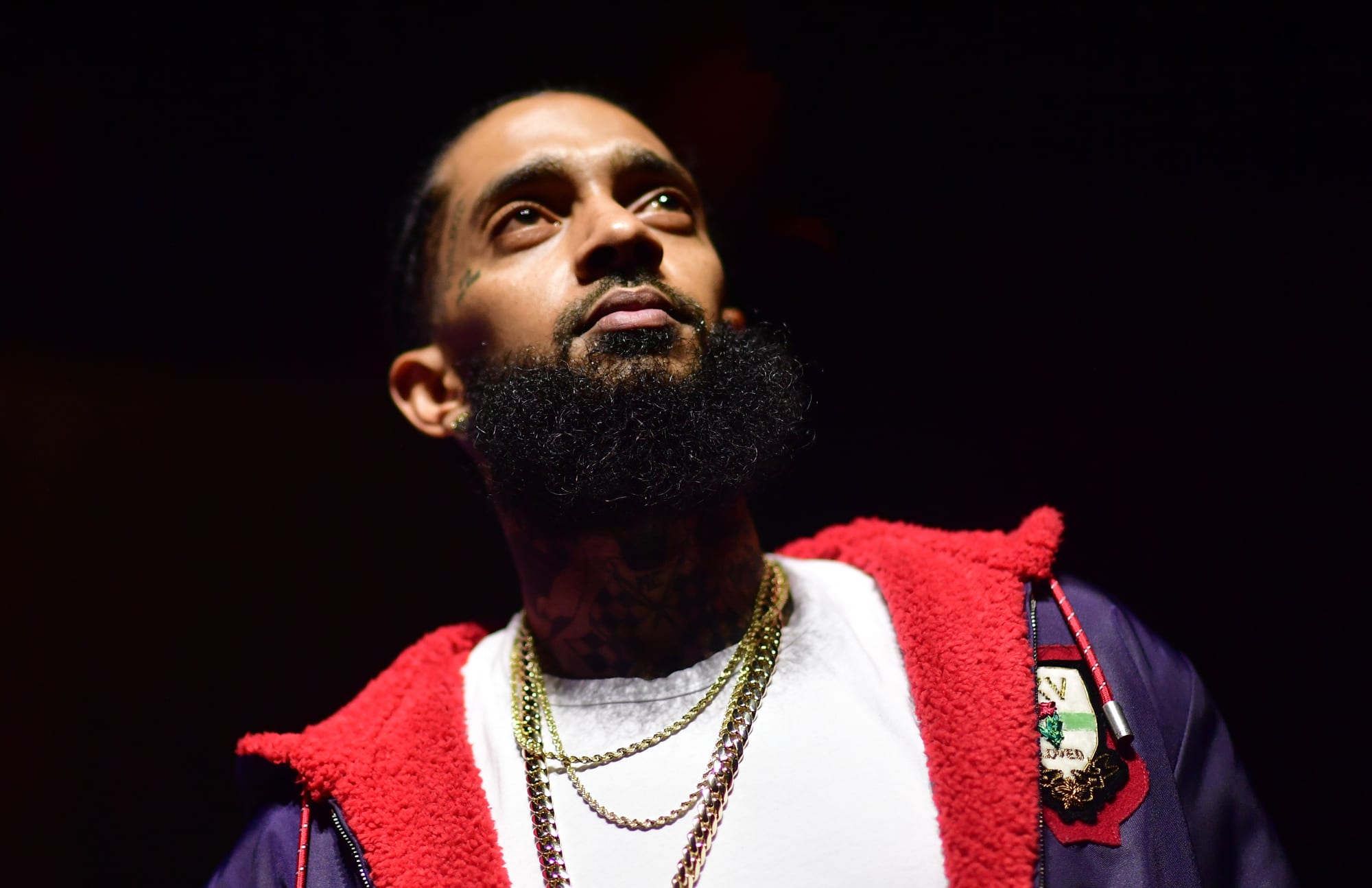
|
Enter Crenshaw, the 2013 mixtape that Hussle audaciously offered for $100 a copy at a pop-up shop—only 1,000 copies available. When the value of recorded music was at an all-time nadir, he took a profound risk to reassert its worth as art. If paintings could go for tens of millions on the auction block and sneakers could be resold for thousands on eBay, why was a limited-edition mixtape not a meaningful proposition to his most die-hard fans? In retrospect, the scheme could’ve failed miserably. If it was anyone else, it might’ve been mocked for its hubris. Or, worse, ignored. But it was Nip, who commanded the respect of his peers and the streets—not to mention JAY-Z, who famously purchased 100 copies.
As Hussle pointed out at the time: “It ISN’T the price of the plastic case and polyurethane disc...it’s the price of Revolution! The price of Rebellion against an industry that has tricked us all into making products that have no soul for fear of not being heard if we don’t.”
Don’t get it twisted: Nipsey was very much an elite rapper, blessed with an outlaw bark that could snarl and smirk in the same bar, a natural melodic sensibility that intuitively used negative spaces to build tension, and a plain-spoken gift for telling relatable stories of schemes and struggle. It came together perfectly on “Crenshaw & Slauson,” the 12-minute finale of Crenshaw, where he recounts his come-up from an 18-year-old driving a white Lincoln with a gun under the pillow to an artist grappling with industry bullshit with Mac 11s hidden in the floor safe. He says that he feels like KRS-One, Dead Prez, and 2Pac—a revolutionary with rap as his chosen medium, one whose verses offered the gift of game and wisdom to absorb—what to avoid and what to aspire towards.
Over the last half-decade, he graduated from a young L.A. street rap legend to an internationally celebrated innovator regularly lauded in the pages of Forbes. If he could cogently break down how to leverage influence and cultural capital into tangible value like a tech CFO, his actions radically diverged from the waves of gentrification-frenzied vultures destroying major American cities. Nipsey could’ve easily purchased a house in Calabasas and invested his money in faceless hedge funds, but instead he single-mindedly focused on rebuilding Crenshaw.
He realized the ideal potential for what could be done with rap money. He bought a neighborhood burger restaurant, a fish market, and a barbershop. He donated shoes to every student at 59th Street Elementary School and financed improvements on their playground and basketball courts. He employed countless neighborhood residents and paid for funeral arrangements for the fallen. Within the food world, he emphatically put on for local independent black-owned businesses like Shad’s New Cali, Mr. Fries Man, Taco Mell, and Trap Kitchen. In February of last year, he cut the ribbon on a combination co-working space and community service hub off Crenshaw. Just two months ago, he closed escrow on the shopping plaza that housed his Marathon store, with plans to build a 100-unit residential building on the property.
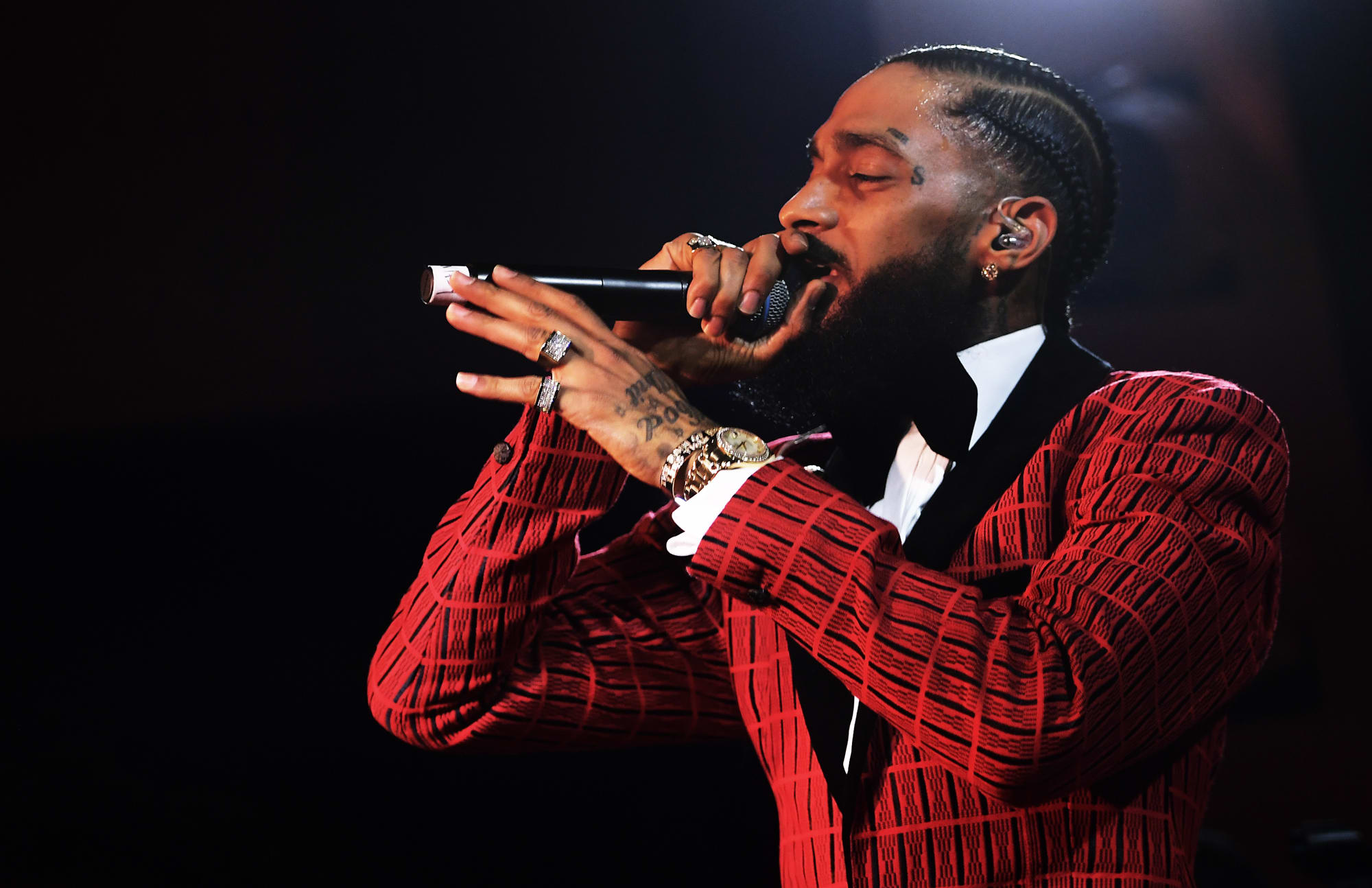
|
If his evolution stopped there, his spot within the firmament of L.A. rap legends would’ve been secured. Instead, he combined with YG to release “FDT,” the defining political rap assault of the era. Of course, there was his long-awaited Victory Lap, his finest work, which received a Grammy nomination for Best Rap Album. If most gangsta rappers in their early 30s have already peaked, Nipsey seemed to be just entering his prime. He was built to be a boss, and success agreed well with him, adding an imperial swagger to his music.
If hardcore street rap had fallen out of vogue during his first years in the public eye, Nipsey sounded right in time for the city’s gangsta rap renaissance—an OG who never sounded out of place amid the paranoiac creep and semi-automatic menace of the modern sound. Consider “Dedication,” his “we made it” celebration with Kendrick Lamar, where Hussle calls himself “the 2Pac of my generation.” While there could only be one 2Pac, you could just as easily say that there could only be one Nip. And both clearly shared a revolutionary fervor, dedication to exposing the truth, and deep love and desire to build up the culture and community that nurtured them.
As an artist, Nipsey boasted 2Pac’s gift of raw power, emotional clarity, and ability to inspire without coming off corny. It was sharp-edged soul music that stabbed you in the aorta and marrow. If Nipsey made it, so could you. Yet you never forgot the hard-fought battles that allowed him to acquire such immutable wisdom, respect and strength; it was this ability to transcend and embody the struggle that made his music and his integrity unimpeachable.
For today and tomorrow, and for the foreseeable future, an entire city and coast are in deep, unshakeable mourning at the loss of a true hometown hero. A real one who revealed the way with clarion vision. The marathon will continue, but it’s clear that we’ve lost our pacesetter.